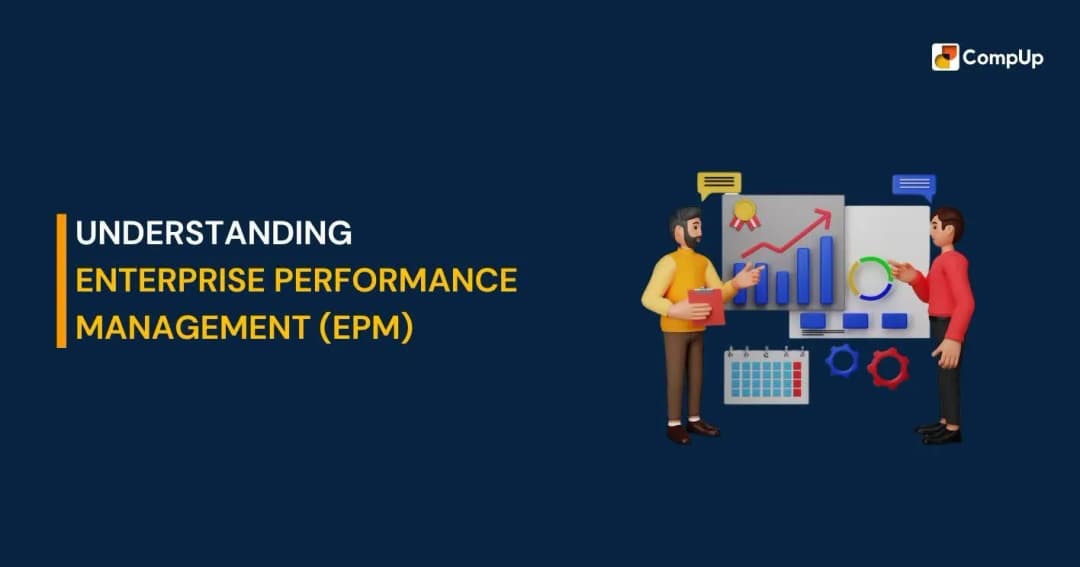
Organizations are under constant pressure to improve efficiency, boost productivity, and drive profitability. Yet, many struggle to connect strategy with execution, leading to missed opportunities, misaligned goals, and disengaged teams. This is where Enterprise Performance Management (EPM) comes into play. It offers a comprehensive framework to align business strategies with individual and organizational performance.
This guide covers the components, benefits, technologies, challenges, and best practices of Enterprise Performance Management (EPM) to help improve business performance.
Enterprise Performance Management has evolved over several decades, originating in the 1960s with the development of early financial management and budgeting systems. In the 1980s, companies began adopting more sophisticated management tools, such as balanced scorecards and strategic planning frameworks, to monitor performance across departments.
By the late 1990s, with the rise of technology, EPM software emerged, offering more integrated and real-time tracking of business metrics. As technology advances, the focus shifts towards aligning individual performance with organizational goals. Today’s EPM systems use AI and cloud-based solutions for greater agility, real-time insights, and predictive analytics.
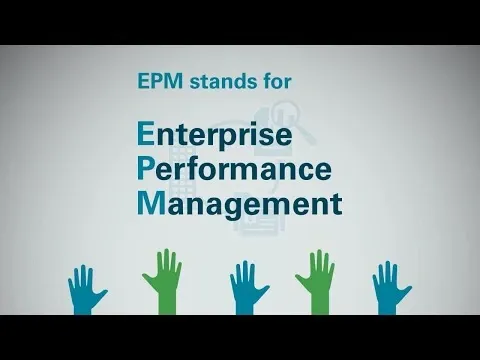
Suggested Watch: Learn more about Enterprise Performance Management in this video.
Next, let’s examine the key components that comprise an effective EPM system.
EPM is not a one-size-fits-all approach. Instead, it’s a comprehensive system composed of several key components that work together to ensure that an organization’s strategy and performance are closely aligned.
Understanding these components is essential for successfully implementing and maximizing the potential of EPM. Let’s break down the primary elements that make up EPM:
Strategic planning is the foundation of EPM. It involves defining the organization’s long-term vision, mission, and goals. Through effective goal setting, EPM ensures that everyone in the organization understands their role in achieving these objectives. Setting clear, measurable goals helps direct efforts and ensures alignment between teams, departments, and the company’s overarching strategy.
Performance monitoring is crucial in measuring the success of strategies and initiatives. EPM allows for real-time tracking of both individual and organizational performance. Performance dashboards, key performance indicators (KPIs), and metrics provide clarity on how effectively resources are being used, whether objectives are being met, and where corrective actions might be required.
Budgeting and forecasting within EPM help organizations plan for the future by estimating revenue, costs, and other financial needs. It allows businesses to allocate resources efficiently, ensuring that the right investments are made to drive growth. EPM systems often integrate financial performance with other areas of business, providing a comprehensive view of progress toward goals.
Suggested Read: Top 5 Pave Alternatives and Competitors in 2025
Talent management is a key component of EPM, focusing on ensuring that the right talent is in place to drive organizational success. This includes recruiting, developing, and retaining employees. EPM helps organizations align employee development with business objectives by providing clear paths for growth, performance evaluations, and compensation adjustments.
Each of these components plays a critical role in helping organizations optimize their performance. When executed effectively, they lead to improved decision-making, greater accountability, and a more engaged workforce.
Integrating tools like CompUp into the EPM framework further enhances talent management and performance monitoring by aligning compensation with performance metrics. With features like Hireshot, which assists in setting competitive, equitable pay for new hires, organizations can attract and retain top talent while ensuring fair rewards for all employees.
Now, let’s look at the benefits that organizations can reap from implementing EPM.
Implementing an effective Enterprise Performance Management system offers numerous advantages that can drive both organizational success and employee satisfaction. When executed properly, EPM helps businesses transform how they plan, monitor, and optimize performance at every level.
Below are the key benefits that organizations can experience with a solid EPM strategy:
CompUp can further elevate these benefits by aligning compensation and rewards with performance data in your EPM strategy. Its core service, Compensation Management, provides a unified solution for managing annual increments, promotions, and adjustments, ensuring consistent and equitable pay structures. The platform ensures that employee performance is directly tied to fair and transparent compensation.
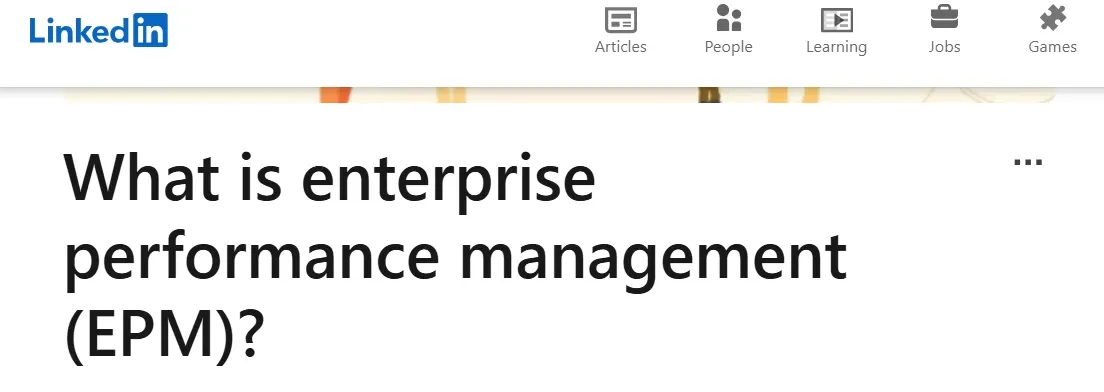
From the Community: This LinkedIn post highlights how EPM serves as a comprehensive framework that aligns strategic objectives with operational execution.
While the benefits are clear, it’s also important to explore the technologies that enable EPM systems to function effectively.
The success of Enterprise Performance Management heavily relies on the technology that supports it. With advancements in software, cloud computing, artificial intelligence (AI), and data analytics, organizations now have access to powerful tools that enable more accurate, real-time performance management.
Here are the key technologies driving the effectiveness of EPM:
Cloud solutions offer flexibility, scalability, and accessibility, allowing organizations to manage performance data from anywhere. Cloud-based EPM platforms ensure real-time updates, effortless integration with other systems, and reduced infrastructure costs.
AI and machine learning technologies help automate data analysis, predict trends, and identify performance patterns. By utilizing these technologies, EPM systems can provide more accurate forecasts, detect anomalies, and suggest proactive improvements.
Data integration tools bring together performance data from various sources (finance, HR, operations, etc.), allowing for comprehensive analysis. Advanced analytics platforms enable businesses to generate actionable insights that guide decision-making.
CompUp excels in this area by offering accessible APIs for quick integration with your preferred software, consolidating compensation data into a unified platform. This advanced analytics platform enables businesses to generate actionable insights that guide decision-making, ensuring fair pay, enhanced employee satisfaction, and alignment with organizational goals.
Mobile access and collaboration features help managers and employees to engage with performance management systems in real-time, regardless of their location. These tools help improve communication, track progress, and provide instant feedback.
EPM systems utilize automation tools to automate repetitive tasks like data entry and reporting, reducing errors and freeing up time for more strategic activities. These tools ensure that routine processes, such as updating compensation records and generating reports, are handled efficiently, allowing HR teams to focus on higher-level tasks. By automating manual workflows, organizations can improve accuracy, save time, and enhance overall productivity.
Suggested Read: Understanding What Competitive Salary Means
With an understanding of the technologies, let’s examine some common challenges businesses face when implementing EPM systems.
While Enterprise Performance Management offers numerous benefits, organizations often face significant challenges when implementing or optimizing EPM systems. Understanding these challenges is crucial to ensuring successful adoption and long-term success.
Below are some of the common obstacles businesses encounter during the implementation of EPM:
Employees and leaders may resist adopting new performance management processes, especially if they are accustomed to traditional methods.
Solution: To overcome this, organizations can involve key stakeholders early in the process, provide clear communication on the benefits of EPM, and offer training and support to ease the transition.
EPM requires high-quality, consistent data to be effective. Organizations often struggle with integrating data from various departments and legacy systems, leading to incomplete or inaccurate information that can impact decision-making.
Solution: Investing in modern EPM systems with strong integration capabilities and employing data governance practices can help ensure data consistency and improve integration across departments.
Implementing an EPM system that aligns with a company’s culture can be challenging. For example, an organization with a culture that values autonomy and decentralized decision-making may struggle with top-down goal setting.
Solution: Tailor the EPM approach to the company’s culture by allowing flexibility in the system’s design, ensuring that performance management is collaborative and transparent, rather than rigid.
CompUp enhances this approach by offering tools that promote clear communication and fairness, such as Pay Transparency and Pay Equity. By integrating these features, CompUp ensures your compensation strategy aligns with company values, driving greater trust and equity across the organization.
EPM implementation requires both time and resources. Smaller organizations or those with limited HR or IT resources may struggle to dedicate the necessary support for a successful implementation.
Solution: Organizations can consider cloud-based EPM solutions, which are often more cost-effective and easier to implement, and use external consultants or managed services for additional support.
If employees do not understand the value of EPM or feel disconnected from the process, they may not fully engage with the system. It’s essential to ensure that employees see how EPM can benefit their career development and performance.
Solution: Engage employees early by demonstrating how EPM can contribute to their career growth, offer incentives tied to performance, and continuously communicate the system’s benefits to promote a sense of ownership and involvement.
Suggested Read: Steps to Create a Fair and Equitable Compensation System
Despite these challenges, adopting best practices can ensure a smooth implementation and help maximize the value of your EPM system.
Successfully implementing Enterprise Performance Management (EPM) requires careful planning, clear communication, and ongoing support from all levels of the organization. By following best practices, businesses can overcome challenges and fully reap the benefits of EPM. 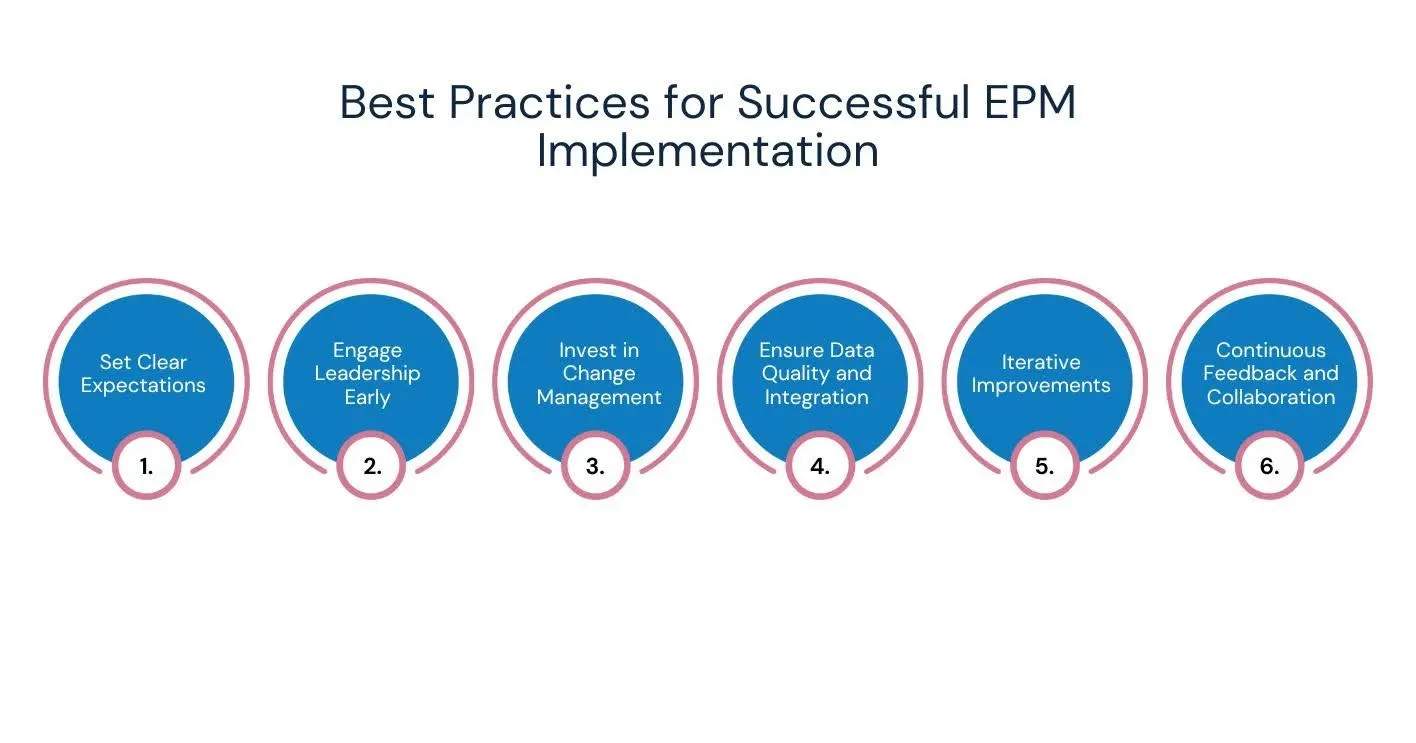
Here are some key strategies for a smooth and effective EPM implementation:
Establishing clear, measurable goals from the outset is crucial. Ensure that all stakeholders understand what EPM aims to achieve, how it will benefit the organization, and how success will be measured. This helps align efforts and reduces confusion during the implementation process.
CompUp helps clarify performance expectations by integrating compensation with company-wide goals. As compensation strategies are aligned with business objectives, employees gain a clearer understanding of how their individual efforts contribute to organizational success. This alignment ensures everyone is on the same page, making goal-setting easier and more impactful.
EPM implementation requires support from top leadership and buy-in from key stakeholders across departments. Early involvement from leadership ensures a unified vision and commitment to the initiative's success. It also helps in securing the necessary resources and overcoming potential resistance.
A successful implementation relies heavily on proper training and change management strategies. Employees at all levels must be equipped with the knowledge and skills to use the new system effectively. Providing ongoing training and clear communication about how the EPM system will enhance performance can ease the transition.
Data is at the core of any EPM system. It’s critical to ensure that the data being fed into the system is accurate, up-to-date, and easily integrated with other business systems. Invest time in cleaning and consolidating data before the implementation process begins to avoid issues later on.
CompUp excels in providing accurate, real-time compensation data and easily integrates with existing HR and performance management systems. By ensuring that compensation information is consistently updated and integrated with performance metrics, CompUp helps maintain high-quality, reliable data that can be easily analyzed for strategic decision-making.
EPM implementation should not be a one-time event; it’s an ongoing process. Keep the system flexible to accommodate changing business needs. Regularly review performance metrics and adjust the system as necessary to ensure it remains aligned with organizational goals.
EPM systems thrive when feedback is consistently gathered from users and stakeholders. Encourage open communication and collaboration between departments to continuously refine and improve performance management processes. This helps keep the system relevant and effective.
With these strategies in place, your organization will be well-positioned to optimize its performance management processes for long-term success.
To truly optimize workforce engagement, organizations must align compensation with performance metrics. CompUp can enhance EPM by making sure that rewards accurately reflect individual contributions.
Effective compensation management plays a vital role in aligning rewards with performance, boosting employee motivation, and ensuring fairness. CompUp integrates seamlessly with Enterprise Performance Management (EPM), helping organizations link strategic goals with equitable compensation decisions.
Key Features of CompUp in Performance Management:
CompUp can help you make your employees feel recognized, maintain equitable rewards, and allow engagement and retention to thrive. The platform aids in creating a workplace where compensation reflects performance.
Enterprise Performance Management is a powerful approach that enables organizations to align strategy with execution, optimize performance, and achieve long-term success. By incorporating key components like strategic planning, performance analytics, budgeting, and talent management, EPM helps businesses drive growth and stay competitive in an ever-changing landscape.
However, its successful implementation requires careful planning, clear communication, and the right technological tools. CompUp ensures that your compensation plans are competitive and that they are linked directly to employee performance. It integrates smoothly with your existing EPM system, ensuring a smooth transition without disrupting your current processes.
Schedule a demo today to see how CompUp can enhance your EPM approach and drive better results.
1. What is EPM in Enterprise Performance Management?
EPM is a framework that helps organizations align their strategies with performance metrics, optimize resource allocation, and drive long-term success. It integrates financial planning, performance tracking, and talent management to improve overall organizational performance.
2. How does EPM work?
EPM works by setting clear strategic goals, monitoring performance through key metrics, and analyzing data to make informed decisions. It integrates financial, operational, and employee performance data to ensure alignment with organizational objectives and guide continuous improvement.
3. What is the difference between ERP and EPM?
ERP focuses on managing day-to-day operations like finance, HR, and inventory. EPM, on the other hand, focuses on aligning business strategy with performance outcomes, enabling organizations to track goals, performance, and financial results for strategic decision-making.
4. What are the three key elements of Enterprise Performance Management?
The three key elements are strategic planning, performance monitoring, and budgeting/forecasting. These components work together to ensure that an organization's goals, performance, and resources are aligned for optimal success and continuous improvement.
5. How can CompUp enhance EPM?
CompUp integrates with your EPM system, aligning compensation strategies with performance metrics to drive better business outcomes. Its data-driven platform ensures consistent pay structures through annual increments, promotions, and adjustments. With features like pay transparency and pay equity, it builds trust and fairness, addressing compensation gaps across roles and demographics.
6. Why choose CompUp for compensation management?
CompUp offers an intuitive, data-driven platform that aligns employee compensation with performance metrics. Its powerful analytics tools help organizations optimize reward structures while maintaining transparency and employee engagement, ensuring compensation strategies align with business goals.
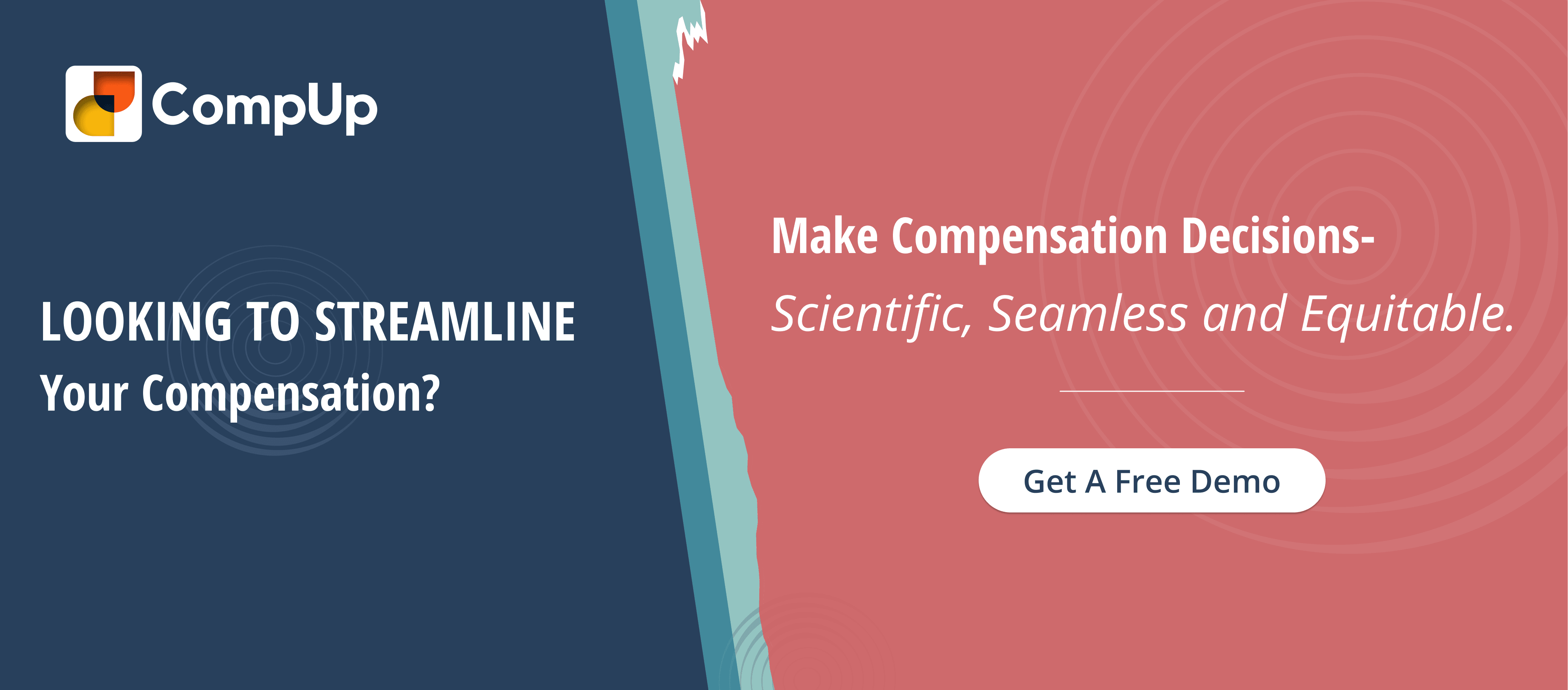
Co-founder & Head of Product
Anshul Mishra, Co-founder and Head of Product at CompUp, blends technology and total rewards to create smart, user-friendly solutions. He focuses on building data-driven tools that help companies design fair and effective compensation strategies, making complex processes simpler and more impactful.
Revolutionizing Pay Strategies: Don't Miss Our Latest Blogs on Compensation Benchmarking